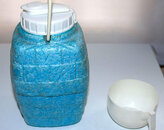- Messages
- 17,699
- Reaction score
- 9,970
- Location
- Somewhere between here and there
- # of dives
- 2500 - 4999
Sorry you're having so many challenges.
I'll go back to my original recommendations for thermal protection
A word or two about underwear? | Doppler's Tech Diving Blog
Thermal Undersuit | Diving Undersuits | Point Below Base | Layering | Baselayer
Thanks Steve, I thought more than once that I might have been better off with an O'Three. I've been offered a pretty good deal on a BZ400 heated full suit. I'll likely go that route as without added heat it might be ok for most of my diving given it's additional bulk over my BZ200 and I can turn the heat on if I get too cold. This has all been an expensive experiment. When people suggest buying a cheap second hand DS to begin with I think it's sound advice. Like buying first set of diving gear, you don't know what you don't know and so often, well I did anyway, end up changing everything. Looks like DS diving is no different. I didn't think the quest for warmth was going to be such an expensive one, heading into the $5000 territory.





